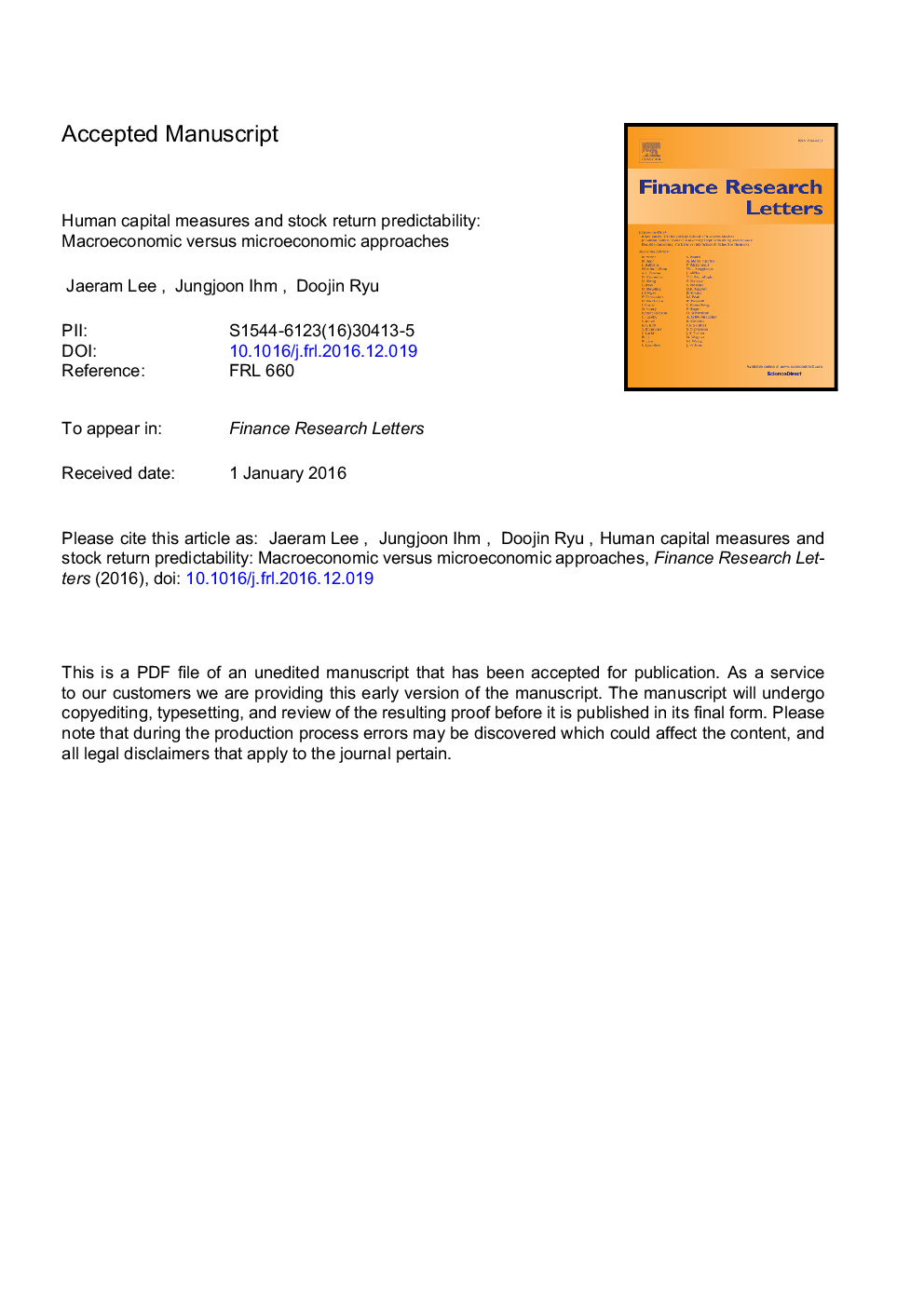| Article ID | Journal | Published Year | Pages | File Type |
|---|---|---|---|---|
| 5069300 | Finance Research Letters | 2017 | 9 Pages |
Abstract
This letter measures human capital returns in a microeconomic sense as returns to education using Korean survey data, and compares them to the traditional macroeconomic measures, such as labor income growth. Both measures exhibit similar patterns of correlation with important economic variables and financial returns. However, returns to education are distinguished from labor income growth by a notable positive correlation with stock cash flow innovation and the consumption-wealth ratio (cay). Further, in a predictive regression of financial asset returns, labor income growth presents a negative effect for future excess stock returns, whereas returns to education exert a positive influence similar to cay. These results show that returns to education reflect another aspect of human capital returns that labor income growth does not reveal.
Related Topics
Social Sciences and Humanities
Economics, Econometrics and Finance
Economics and Econometrics
Authors
Jaeram Lee, Jungjoon Ihm, Doojin Ryu,
